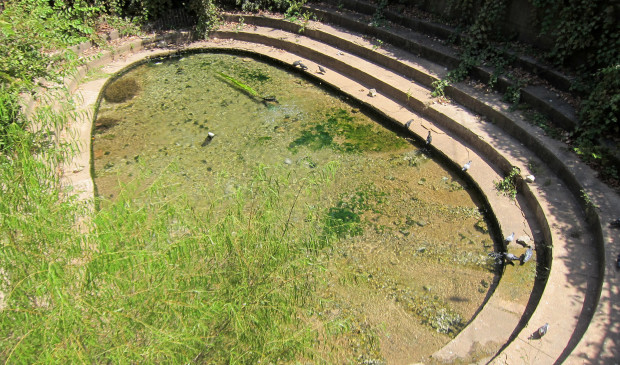Staff seeking OK to fix Eliza Spring
Tuesday, March 22, 2016 by
Jo Clifton Members of the city’s Watershed Protection and Parks and Recreation departments have been planning improvements for Eliza Spring in Zilker Park since at least 2012. The spring, which is home to the largest concentration of the endangered Barton Springs salamander as well as to Austin blind salamanders, is recognizable to visitors because of the historic amphitheater built by the Elks Club in 1903.
After all the planning and approvals received from the Texas Commission on Environmental Quality, the Texas Historical Commission, the federal Fish and Wildlife Service and the United States Army Corps of Engineers, and after holding several public meetings, staff is now working to obtain permission from City Council.
But before it can ask Council for its blessing, staff must seek favorable recommendations from the city’s Environmental Commission and Planning Commission. Although those positive recommendations are not required, without them staff would have a hard time explaining why Council should approve the project.
Donelle Robinson, a salamander biologist, and Chris Herrington, an environmental engineer who leads the water resource evaluation section of the Watershed Protection Department, met with seven members of the Environmental Commission on Monday to explain the project to them and to get feedback. That feedback will help them with the presentation they plan to move to the full commission Wednesday night.
What it boils down to is an effort to give the salamanders a better habitat and prevent any future disaster from befalling the species because of the old outlet for the spring, which has deteriorated significantly. As the city website puts it, “In the 1920s, flow from the spring was enclosed in a pipe, made of concrete and metal. This concrete and metal environment does not make for ideal salamander habitat. The Watershed Protection Department is proposing to convert the pipe back to an open stream, a process known as daylighting. This would return the spring run to a more natural state and enhance the salamander habitat, improving the potential for long term recovery of the species.”
The daylighting project requires a site-specific amendment to the Save Our Springs ordinance as well as variances that will allow the project to exceed impervious cover limits, exempt the project from the pollution control requirements of the SOS ordinance and allow construction within the buffer of the spring, a critical environmental feature.
Many of the questions to staff had to do with trees, such as: Why had they chosen certain species of trees? Why had they chosen smaller trees rather than larger ones? Would the trees offer enough shade, and how soon?
Herrington explained that the tree choices had been the subject of considerable negotiation among biologists, members of the parks department and the city arborist. Environmental Commission Chair Mary Gay Maxwell told Herrington that he should make sure to bring along some of those tree specialists to Wednesday night’s meeting.
Maxwell also noted that there are four engineers on the commission and that they would all have questions about different engineering aspects of the plan. She recommended that staff provide more pictures and drawings to explain the plan’s details.
Robinson said that staff plans to start construction in the fall and to be done by next spring, in order to have less impact on users of the park and the pool, although the pool will remain open for the duration of the construction.
Robinson added that they were concerned about finding a contractor who would be willing to work within all the limitations required by the city and the Fish and Wildlife Service. For example, she said a city biologist would be on-site during every part of construction to protect the habitat.
The restoration is being funded through the Watershed Protection Department’s drainage utility fee. Robinson said the department was more interested in finding a contractor who would work within the rules than in getting the best deal.
Photo by Wally Gobetz made available through a Creative Commons license.
You're a community leader
And we’re honored you look to us for serious, in-depth news. You know a strong community needs local and dedicated watchdog reporting. We’re here for you and that won’t change. Now will you take the powerful next step and support our nonprofit news organization?









